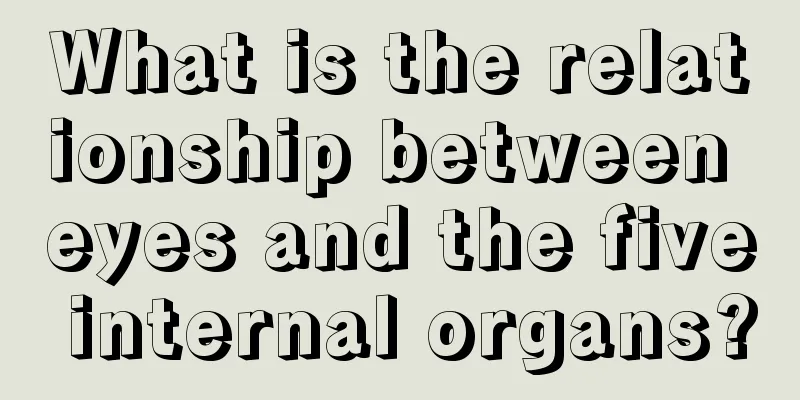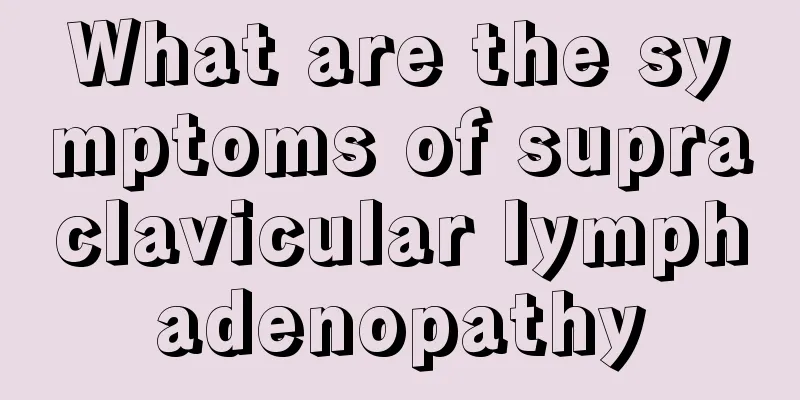What is the relationship between eyes and the five internal organs?

|
Eyes are the most important organs of human beings. Eyes can see any object in the world. If you lose your eyes, you will be in darkness. Due to the importance of eyes, many people begin to pay attention to them. However, with the increase in electronic products, many people fail to protect their eyes, resulting in a variety of eye diseases. We can observe the symptoms of the eyes to judge the problems of other organs in the patient's body, so what is the relationship between the eyes and the five internal organs? The "Yellow Emperor's Internal Classic" says that the five internal organs of the human body have corresponding orifices, and some of their functions are also manifested through these orifices. It is believed that the mouth is the orifice of the spleen, the nose is the orifice of the lungs, the tongue is the orifice of the heart, the ears are the orifice of the kidneys, and the eyes are the orifice of the liver. Traditional Chinese medicine, from the perspective of holism, recognizes that although the eye is a local organ, it has a close relationship with the whole body, especially the internal organs, meridians, etc. As the Yellow Emperor's Classic of Internal Medicine says, "the essence of the five internal organs and six bowels of the human body are all infused into the eyes and become the essence." It also says that "all meridians belong to the eyes." The reason why our eyes can see everything and distinguish colors is all due to the nourishment of the essence of the five internal organs. Essence and Qi are the material basis of human life activities. Eyes can only function if they are nourished by essence and Qi, and only then can vision be normal and the spirit be full. Therefore, the "looking at the eyes" in traditional Chinese medicine means not only identifying diseases by observing various conditions of the eyes, but also inferring the changes in the functions of the internal organs of the human body. It has the important significance of inferring the inside from the outside and seeing the big from the small. On this basis, later medical doctors developed the famous "Five Wheel Theory" according to the corresponding relationship between various parts of the eyes and the functions of internal organs. They believed that the various parts and functions of the eyes belong to the five internal organs. Among them: the blood vessels of the inner and outer canthus of the eyes belong to the heart, called the "blood wheel"; the black of the eyes belong to the liver, called the "wind wheel"; the white of the eyes belong to the lungs, called the "qi wheel"; the pupils of the eyes belong to the kidneys, called the "water wheel"; the upper and lower eyelids of the eyes belong to the spleen, called the "meat wheel". In addition, the ancients also classified and divided the eyes according to the theory of Bagua, and divided them into eight equal parts according to the four cardinal directions and four corners of the Bagua, including Zhen in the east, Dui in the west, Li in the south, Kan in the north, Gen in the northeast, Kun in the southwest, Qian in the northwest, and Xun in the southeast, and attributed them to the Bagua and the five internal organs. This is the "Eight Peripherals" theory of the eyes, and many people still use this method in clinical diagnosis and treatment today. According to traditional Chinese medicine, the eyes are the messengers of the heart. The heart contains the spirit. The heart is where the spirit resides. Therefore, if the spirit is scattered, the eyes will be confused. That is, once our spirit is scattered, our eyes will inevitably become presbyopic when seeing things. There is a saying: whether you spend money or not, you will be forty-eight. This means that people may become presbyopic when they reach the age of 48. In fact, whether the eyes are presbyopic or not depends largely on whether the mind is distracted or not. Eyes with watery eyes are caused by insufficient lung qi and insufficient astringent function of the liver. Tears in the eyes are called "affectionate eyes" in physiognomy. This type of people have insufficient lung qi. The lungs are responsible for regulating the water channels, and the liver is also responsible for the water channels. So the liver and lung functions are deficient, and the ability to transport, distribute, and descend is weak, causing water vapor to always be accumulated above, or the water channels cannot be contained. This type of people will always have tears in their eyes. Tears in the wind are caused by the inability of the liver meridian to contract. Dry eyes are a sign of insufficient liver blood and weak yang energy. People with this condition are prone to losing their temper and getting angry for no reason in daily life. Bulging eyes is also an eye disease. We often see people with bulging eyes. Generally, these people do not have high intraocular pressure. Most of this is related to excessive drinking and is also a sign that the liver meridian cannot be restrained. These people have a bad temper, are easily angered, and are more competitive. Many women with this symptom will also suffer from hyperthyroidism. There are thick bags under the eyes, which is actually a kind of edema. The area under the eyes is where the small intestine meridian passes, and it is related to the triple burner, small intestine, and kidneys. If there is a problem here, it is basically because of insufficient Yang Qi to boil water and metabolize the water. This is a disease caused by cold evil. Swelling of the upper eyelids is caused by spleen dampness, while swelling of the lower eyelids is caused by yang deficiency. What is the relationship between the eyes and the five internal organs? Through the explanation of the article, we have already mastered the relationship between the eyes and the five internal organs. This is mainly analyzed from the perspective of traditional Chinese medicine. When we use our eyes for a long time, our eyes will feel very dry and tired. Patients can feel a lot of discomfort, but they can recover after rest. However, the eyes can also suffer from serious eye diseases, such as glaucoma, cataracts, etc., which need to be diagnosed and treated in time to prevent the failure of treatment after the disease becomes complicated. |
<<: What is the best sleeping position for lumbar muscle strain?
>>: What is the correct sleeping position and treatment for torticollis
Recommend
My mother has advanced breast cancer and has been unable to eat recently
Advanced breast cancer patients cannot eat, mainl...
Itchy and red armpits
In fact, the skin in the armpits is somewhat simi...
Can facial paralysis be treated with cupping
Facial palsy, a symptom of facial nerve disorder,...
How to prevent headaches in the morning
Headache is a common disease in our life. It has ...
Is it necessary to remove the IUD?
The IUD is a common contraceptive tool with a rel...
What are the dangers of self-heating rice
Improper operation of self-heating rice may cause...
Can glomerulonephritis be cured? Treatment for nephritis
Glomerulonephritis usually develops slowly, and m...
What are the dangers of drinking water or making tea from a sterling silver cup
As we all know, the human body needs to replenish...
Under what circumstances should an MRI be performed
Most people are familiar with magnetic resonance ...
What are the symptoms of prostate cancer
Prostate cancer is a common and serious disease. ...
What kind of exercise is suitable for lung cancer
We often hear doctors or family members tell us t...
How do prostate tumors come about
Prostate tumors belong to urology, and most of th...
How long can you live without lung cancer spreading
How long can you live without lung cancer spreadi...
Check your back pain promptly, beware of kidney tumor
Many diseases are characterized by back pain, so ...
Is there any ultraviolet light on a cloudy day
There are many elements in nature, including infr...









